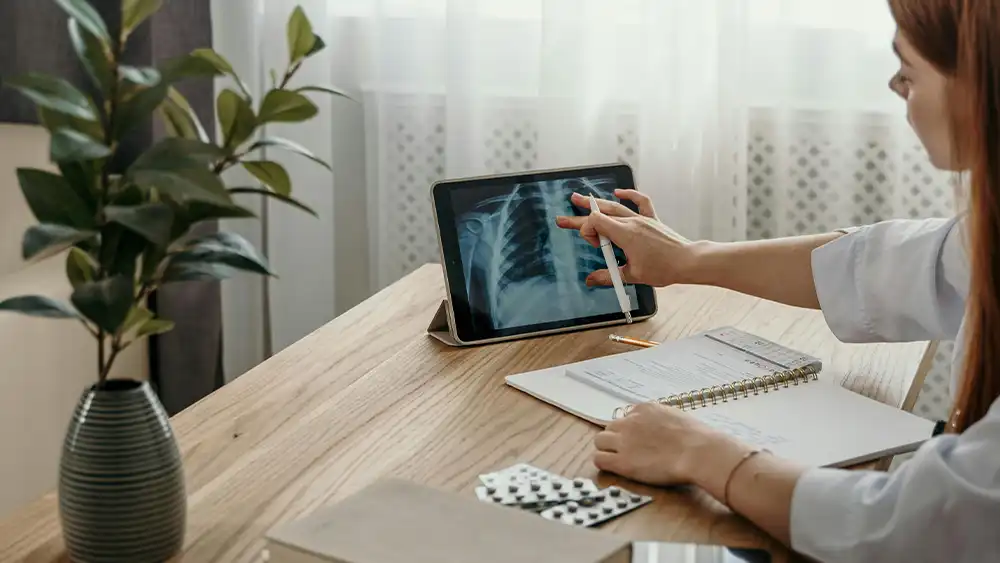Practical Tech Solutions for Streamlining Your Medical Business

The healthcare sector is undergoing a significant digital transformation, driven by technology advancements and an increasing demand for efficiency. Medical businesses, from small clinics to large hospitals, are realizing the benefits of adopting innovative tech solutions to streamline operations. These technologies improve patient care and internal processes. Embracing these changes is no longer optional; it is a must for the survival and growth of medical practices. Read on to learn all about it.
Boosting Online Presence Through Website Design
Any medical business aspiring to reach new patients and build trust within the community needs a robust website. The website needs to be user-friendly, informative, and visually appealing to attract and retain visitors. Investing in professional medical website designers like Total Medical Design guarantees that your website effectively communicates your brand and meets industry standards. Mobile compatibility, easy navigation, and accessibility features retain visitors and encourage them to connect with your practice.
Implementing SEO strategies on your website can boost your search engine ranking, so it’s much easier for patients to find you. When you feature informative blog posts, service descriptions, and patient testimonials, you build credibility and trust among potential patients. A well-designed website supports your practice in managing patient relationships and providing valuable content to your community.
Patient Experience Through Technology

When practices leverage online appointment scheduling, telemedicine, and electronic health records (EHRs), they can improve how patients interact with their services. Online appointment systems reduce administrative burdens and allow patients to book or reschedule appointments conveniently. Telemedicine allows healthcare providers to reach patients remotely, ensuring continuity of care without the need for physical visits.
EHR systems improve patient records’ accessibility and accuracy, making information readily available to healthcare professionals. This streamlines workflows and facilitates better communication between providers so that all team members are on the same page regarding patient care. With an integrated approach to patient management, practices can deliver a more cohesive healthcare experience.
Also Read: Interesting Facts About Health Science
The Role of Automation in Reducing Administrative Burdens
Administrative tasks take up considerable time and resources in medical practices. Automating processes such as billing, patient reminders, and even insurance verification can free up staff to focus on more critical patient care activities. Solutions like automated billing systems provide accurate invoicing and reduce billing errors, which can be costly in both time and money. Automated patient reminders for appointments and follow-ups decrease no-shows and enhance patient engagement.
Advanced software can manage insurance claims more effectively, reducing the backlog associated with manual entry. Medical facilities can automate their operations and improve the workflow. Personnel can reallocate their time to essential duties, positively impacting the quality of care provided to patients.
1. Data Security
With the rise of digital solutions, data security is a primary concern for healthcare providers. Protecting patient information from cyber threats is a matter of trust. Medical businesses must implement robust cybersecurity measures, including encryption and secure access protocols, to safeguard sensitive data. Regular training for staff on data protection practices can also mitigate risks posed by human error.
Medical practices can guarantee compliance with regulations and boost patient confidence. Secure systems also enable practices to improve their operations without risking patient trust. Investing in the right technologies and policies is a necessity for any practice looking to succeed online. To further strengthen your practice’s digital infrastructure, understanding the link between security and compliance helps healthcare providers reduce breach risks, meet industry standards, and innovate with confidence while keeping patient data safe.
2. Communication Within Your Practice

Effective communication is key to a well-functioning medical practice. Secure messaging platforms can improve communication between staff members and facilitate quick decision-making and collaboration. In a situation when urgent medical cases happen, these systems can be a turning point for the medical practice.
Systems that consolidate all communication, be it internal memos or patient communications, allow for a more organized workflow. Transparent communication reduces the chance of errors and misunderstandings and results in better team cohesion and optimized patient care. In addition, implementing a business activity monitoring protocol allows medical practices to track file transfers and user activity in real time, helping ensure secure, compliant, and efficient communication workflows.
3. Telehealth as a Long-term Strategy
Telehealth is a long-term strategy that can benefit medical businesses. Practices can expand their reach and cater to patients who may not be able to visit physically. This flexible approach to healthcare can improve access for patients in rural areas or with mobility issues.
Telehealth solutions integrate seamlessly with existing EHR systems, making it easier to track patient progress and outcomes. This creates a holistic view of patient care and maintains the level of interaction that traditional in-person visits offer. As more patients express a preference for online healthcare options, incorporate telehealth into a practice’s offerings.
Final Words
The integration of technology in medical practices can improve patient experience, streamline operations, and prioritize data security. Automation, innovative communication, and telehealth solutions can position any medical business for future success. Embracing these advancements cultivates trust and satisfaction among patients.

news via inbox
Sign up and never miss out on the latest news and updates at HighStuff



